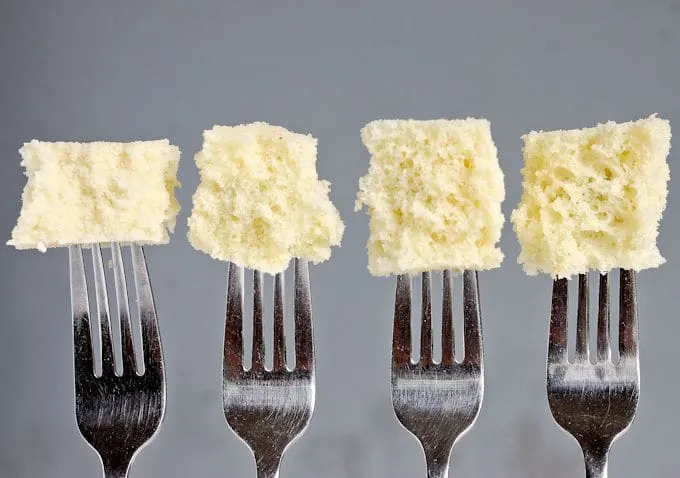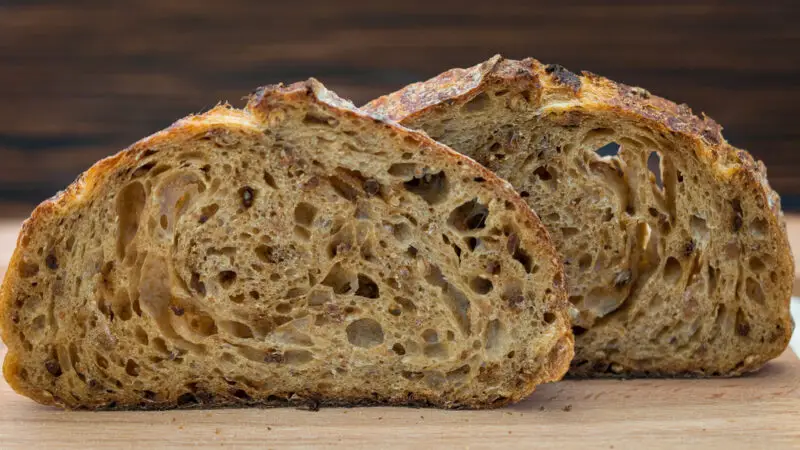Baking a cake is like a science experiment – every ingredient plays a crucial role in determining the texture, flavor, and the overall look of the cake. As precise as baking can be, even the most experienced bakers can forget an ingredient or two in their recipe. But what happens when you forget the all-important baking soda? Will it ruin your cake? Fear not, my friends, as we explore this baking conundrum and unravel the mystery behind forgetting baking soda in your cake batter. So buckle up, let’s dive into what happens when you leave out the trusty little box of baking soda. As a baker, forgetting an ingredient can be highly frustrating and stressful, especially if it is crucial like baking soda. Baking soda is a leavening agent used to help cakes rise and become fluffy. Without it, your cake may turn out flat, dense, and unappetizing. In this article, we will explore what happens if you forget to put baking soda in your cake recipe, the signs that your cake is missing baking soda, ways to fix the cake, other common cake baking mistakes, how to avoid forgetting ingredients in your recipe, and much more.
## What Happens if You Bake a Cake Without Baking Soda?
Baking soda plays a pivotal role in cake baking. It reacts with acidic elements in the batter to produce carbon dioxide gas that expands while baking. This reaction produces air pockets throughout the batter, giving it the ability to rise when heated.
If you forget to put baking soda in your cake recipe, then there will be no carbon dioxide gas produced in your mixture; thus, the batter won’t rise as expected. Resultantly, your cake will end up being dense and flat due to lack of air pockets.
The texture of your baked item will also be adversely affected because of moisture content regulation. A properly baked cake should be moist but structured enough to hold together as a solid piece.
Acidic elements are essential when working with baking soda because they play a part in producing carbon dioxide gas. Without these elements combine with baking soda; you’ll end up with off-tasting and tangy flavors instead of the sweet goodness you expect from a well-made dessert.
In summary, leaving out the right amount of baking soda changes several essential aspects of your cake recipe that affect flavor and texture greatly.
## Signs That Your Cake Is Missing Baking Soda
There are visible signs that a vital ingredient is missing from any recipe- be it cakes or other baked goods. Here are some indications that your cake is missing baking soda.
### 1. Visible Differences
You will notice a visible difference when your baked goods are ready if you have missed an ingredient like baking soda. Your cake will come out flat with a dense texture instead of the light and fluffy appearance one expects from cakes. This result may appear uneven or lumpy too.
### 2. Texture Differences
Using baking soda in your cake recipe helps it become airy, light and fluffy while baking. Therefore, if you do not use baking soda, then your cake may end up being dense, heavy, and chewy than they ought to be.
### 3. Flavor Differences
When making a cake, the ingredients should complement each other to create a delicious dessert with a perfect balance of sweetness, acidity, and other elements. One critical role of baking soda is to neutralize the acidity in acidic ingredients thereby ensuring a balance of flavors that enhances overall flavor profile. If there is no baking soda, the lack of neutralization leads to off-tasting tanginess affecting overall taste.
## Tips for Fixing Cakes That Don’t Have Baking Soda
If you forget to put baking soda in your cake recipe, don’t panic- there are ways to fix this mistake. Here are some helpful tips for fixing cakes that don’t have baking soda:
### 1. Adding Baking Powder as a Substitute
One option is substituting baking powder for the missing baking soda in the recipe. Baking powder is similar to baking soda but has acid already added -ensuring carbon dioxide gas production even without an acidic element thus saving a cake-making disaster unknowingly resulted from forgotten ingredients.
For instance- If your recipe needs about one teaspoon of baking soda but lacks it in hindsight, add about three teaspoons of baking powder instead.
However, bear in mind that using a larger quantity could alter other aspects such as taste and texture; therefore some adjustments may be necessary.
### 2. Using Other Leavening Agents like Yeast or Cream of Tartar
Other leavening agents like yeast or cream of tartar can work as a great substitute. Yeast, particularly when indulged in early and bred with acidic ingredients, produces air pockets, ensuring your cake rises. Cream of tartar is another alternative that supports the release of carbon dioxide hence making it perfect for replacing baking soda.
However, cream of tartar only helps during the initial stage of baking dough promptly but fails to sustain this ability throughout the whole process.
### 3. Combining Acidic Liquids with Baking Soda to Create Carbon Dioxide Gas
For those wanting to stick to chemical leaveners and looking for an alternative to baking powder- combine one-quarter teaspoon (or less) of citric acid with standard baking soda (one teaspoon). Add water to the mix and use it as you would baking soda in your recipe’s call for it.
This addition will facilitate acid and base reaction that creates carbon dioxide gas necessary in making your cake light, fluffy and elevated, although it may affect taste due to the high amount of acid required; therefore be careful not to add too much.
When using these alternative options-combined with acid use them cautiously because they have unique chemical reactions that can drastically affect flavor or texture when overused.
## Other Common Cake Baking Mistakes
As a baker, you may be wondering what other mistakes can happen during cake-making apart from forgetting one ingredient like baking soda? Here are some typical baking mistakes:
### 1. Overmixing Batter
Overmixing your batter once the dry ingredients are well integrated along with incorporating wet ones can overstimulate gluten production causing your cake crusts and crumb too dense or stiff.
Avoid overbeating ingredients together by careful monitoring and keeping an eye on them instead take care around suspension vs mixing thoroughly.
### 2. Overfilling Pans Resulting in Spillover or Uneven Cooking
Pouring your cake batter into pans to the brim is a risky practice; avoid it as this causes spillovers and uneven cooking. Instead, barely fill your pan or keep some space at the top to allow rising- making sure every part of the cake is cooked similarly.
### 3. Oven Temperature Mistakes
Setting your oven temperature correctly is essential during baking to regulate your recipes’ temperature accurately and avoid undercooking or overcooking. Read up on your recipe instructions, know what temperatures should be used, and keep an eye on your thermometer before putting them into the oven.
Additionally, preheating is usually required for successful cake-baking; therefore you must put it in while letting it heat beforehand thoroughly.
### 4. Compromising on Ingredients
Lastly, is compromising on ingredients when preparing for a recipe- taking a shortcut may seem like a great idea at the moment but will ultimately affect overall taste after baking while compromising final outcomes.
Be careful while measuring ingredients and don’t leave out critical ingredients or substitute components thoughtlessly.
## How to Avoid Forgetting Ingredients in Your Cake Recipe
While everyone forgets an ingredient or two once in a while, forgetting an essential ingredient can be quite problematic when attempting to prepare a special meal or dessert. Here are some ways to help reduce the chances of ingredient amnesia:
### 1. Creating A Checklist
Set up an ingredients checklist before starting adding checking off each item when added until all needed products are included thereby reducing chances of missing anything.
### 2. Having All Your Ingredients Set Up Before You Even Begin Making The Recipe.
This helps keep them from getting forgotten during preparation time by eliminating premature errors before they emerge as issues throughout cooking processes.
## Conclusion
In conclusion, baking soda’s role in cakes cannot be overstated due to its importance in producing airy, light and fluffy baked goods when properly used. Leaving out the baking soda will lead to a flat, dense, and clunky cake that no one will be overexcited about. However, through our tips on ways to fix cakes that lack baking soda and other common baking mistakes to avoid, you can eliminate errors thereby improving overall recipe outcome- also ensuring you don’t forget essential ingredients even by accident- all through careful planning and effective ingredient usage in baking.
Summary
Forgetting a crucial ingredient like baking soda can be disastrous for a cake, leading to a dense and unappetizing end-product. This article explores the role of baking soda in cake baking, the effects of leaving it out, and tips for fixing the situation. Using baking powder or other leavening agents like yeast or cream of tartar are potential substitutes, along with combining acidic liquids with baking soda. The article also touches on other common cake baking mistakes and how to avoid them. Ultimately, precision with ingredients is key to success, and having a checklist or preparing all ingredients before beginning can help ensure success in baking projects.







